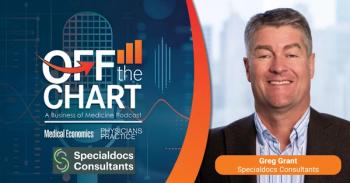
- Medical Economics July-August 2025
- Volume 102
- Issue 6
- Pages: 39
Why technology integration is no longer optional for physician practices
As the business of medicine grows more complex, independent physician practices face increasing pressure to do more with less. Administrative burdens continue to mount, staffing remains a persistent challenge, and reimbursement models are evolving in ways that reward efficiency and data-driven decision making. In this environment, integrating
Medical Economics spoke with Steven Waldren, M.D., M.S., chief medical informatics officer at the American Academy of Family Physicians, about why embracing
The transcript was edited for brevity and clarity.
Medical Economics: What is a tool you've seen that might help solve some of the problems that doctors commonly face?
Steven Waldren, M.D., M.S.: The biggest challenge is the documentation and that is also where we're seeing the largest impact of AI. We've been evaluating solutions since about 2019, and at that time, it was more of a command and control function. We saw significant time savings, but you still had to tell the AI what you wanted it to do. It was kind of like an AI transcriptionist, so to speak. What we've seen in the past couple of years is what I call ambient listening: You have a smartphone device and you bring it in with the patient. You say, “Hey, I'm going to have AI listen to our conversation. It's going to help me create my notes. I can spend more time focused on you, and then the audio will be deleted after the note is generated.” You push a button on your smartphone and have your conversation with the patient. Maybe afterward, you have a little monologue with the device.
Let's say the patient came in for a headache, and you're confident they have a migraine or cluster headache. You tell the device here's what I would do if I wanted to evaluate them for some type of intracranial mass or something — this is when I would do it, why I would do it. You can do that in a monologue, and then within 30 seconds, your note is ready. You make some minor adjustments, and you have just seen a significant reduction in burden. Doctors are calling this a game changer. Finally, technology that's there to help them, as opposed to helping with the billing and the other things that are asked of them.
Some doctors who were thinking about retiring are now saying [practicing is] much better. I think we've also seen that the amount of time savings and burnout reduction are out of proportion. For that amount of savings, you wouldn't assume that there will be that much burnout reduction and burden reduction, but it's a hope that finally there's technology here that is designed to help doctors take care of their patients and do the things that they need to get done as a clinician.
Medical Economics: How difficult is it to implement some of these tools, integrate them into the workflow and get doctors used to using them?
Steven Waldren, M.D., M.S.: One challenge is having the right EHR. These tools — they're not integrated with all
The next challenge becomes getting it integrated into the workflow, and saying, does this truly work? Can I actually use this at the front line? The last challenge is, as you start to get into the clinical aspects of AI, how safe is this? How reliable is this? Who's liable? Those types of things start to come to the forefront.
Medical Economics: Looking back at the changes that have happened in just the past few years, where do you see this all going in five or 10 years?
Steven Waldren, M.D., M.S.: Every time I do a prediction, I always quote Amara’s law. It says that we always overestimate what technology can do in the short term, and we always underestimate what technology can do in the long term. And I think that's going to be the case with AI. It's logarithmic growth.
So, in about three years, it's going to be 64 times more powerful than it is now, but in five years, it's going to be 1,000 times more powerful. It's going to be hard to predict, but I think we'll see a lot of the notes are now being generated by these ambient solutions. We have to make sure that continues to work well, because those generated ambient notes will be used as context to create the next notes down the line. We'll see some of the inbox-related stuff start to happen. There are some interesting new solutions out there to help with the inbox and summarize data. We're already seeing it now, where it can create a problem-oriented summary. It reads through the entire EHR and the health information exchange and pulls that together. There are still some challenges with suspected diagnoses and duplicate diagnoses and all the coding required for value-based care, but that will be another large area of growth.
On the clinical side, we'll still see continued growth, but it'll be a little slower, just because we have to make sure those things are done ethically and safely. And I'm sure we'll have another big breakthrough. We had ChatGPT in 2022, we had DeepSeek in 2025, so we'll probably have at least two or three more big leaps forward, probably in the next five years.
Articles in this issue
5 months ago
Breaking down practice size: The latest data5 months ago
The new standard for medical malpractice5 months ago
Sticking with your money plan5 months ago
The worrisome state of independent practiceNewsletter
Stay informed and empowered with Medical Economics enewsletter, delivering expert insights, financial strategies, practice management tips and technology trends — tailored for today’s physicians.








